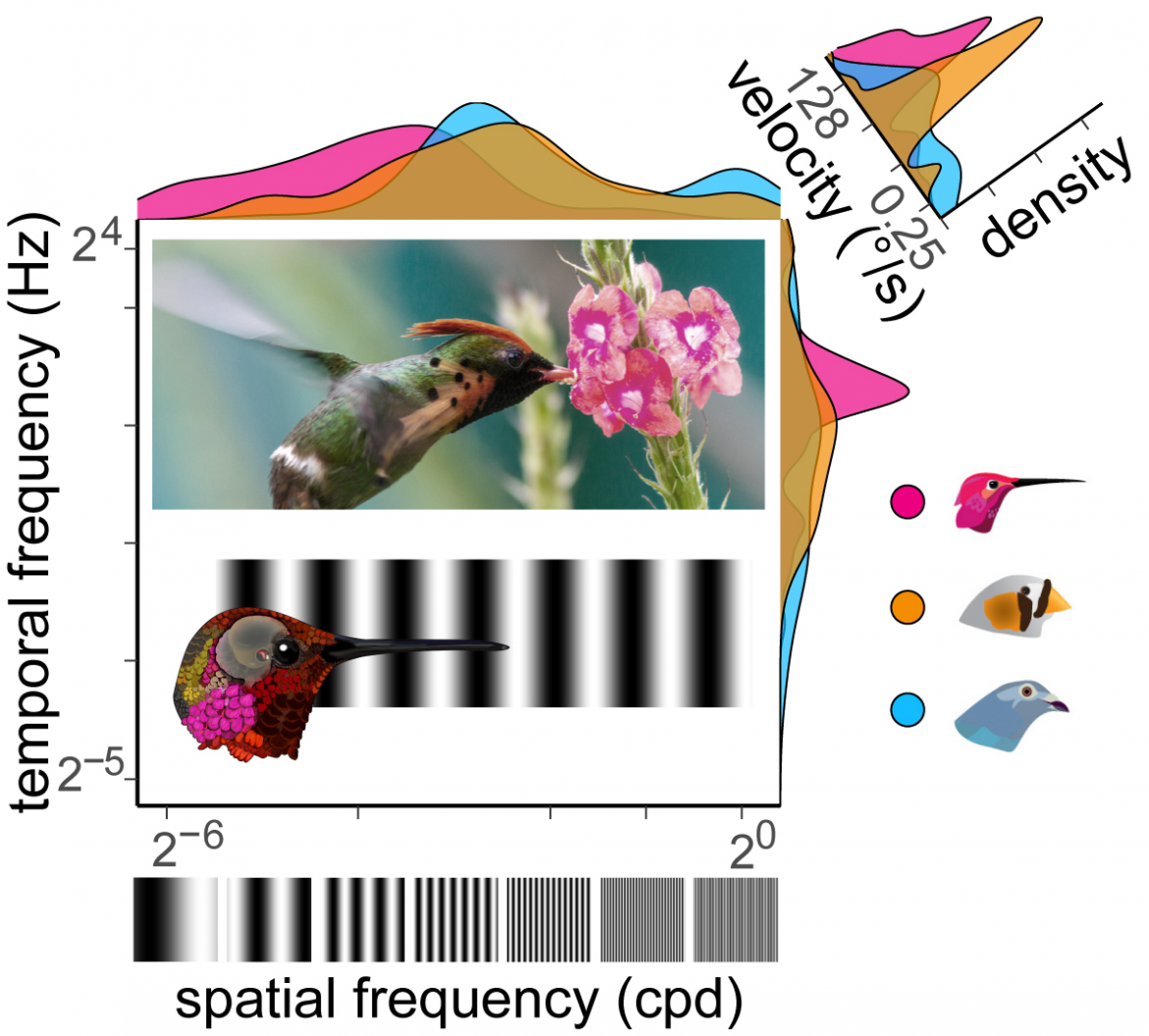
"In other journals" - Science, Jun 30, 2022: Nimble neurons enable nimble flight
____________
Summary
All visual animals experience optic flow—global visual motion across the retina, which is used to control posture and movement. The midbrain circuitry for optic flow is highly conserved in vertebrates, and these neurons show similar response properties across tetrapods. These neurons have large receptive fields and exhibit both direction and velocity selectivity in response to large moving stimuli. Hummingbirds deviate from the typical vertebrate pattern in several respects. Their lentiformis mesencephali (LM) lacks the directional bias seen in other tetrapods and has an overall bias for faster velocities. This led Ibbotson to suggest that the hummingbird LM may be specialized for hovering close to visual structures, such as plants. In such an environment, even slight body motions will translate into high-velocity optic flow. A prediction from this hypothesis is that hummingbird LM neurons should be more responsive to large visual features. We tested this hypothesis by measuring neural responses of hummingbirds and zebra finches to sine wave gratings of varying spatial and temporal frequencies. As predicted, the hummingbird LM displayed an overall preference for fast optic flow because neurons were biased to lower spatial frequencies. These neurons were also tightly tuned in the spatiotemporal domain. We found that the zebra finch LM specializes along another domain: many neurons were initially tuned to high temporal frequencies followed by a shift in location and orientation to slower velocity tuning. Collectively, these results demonstrate that the LM has distinct and specialized tuning properties in at least two bird species.